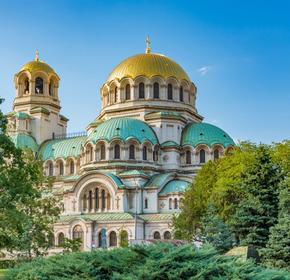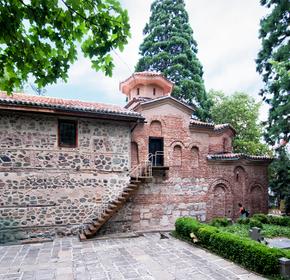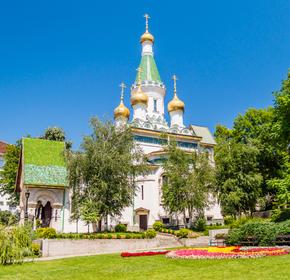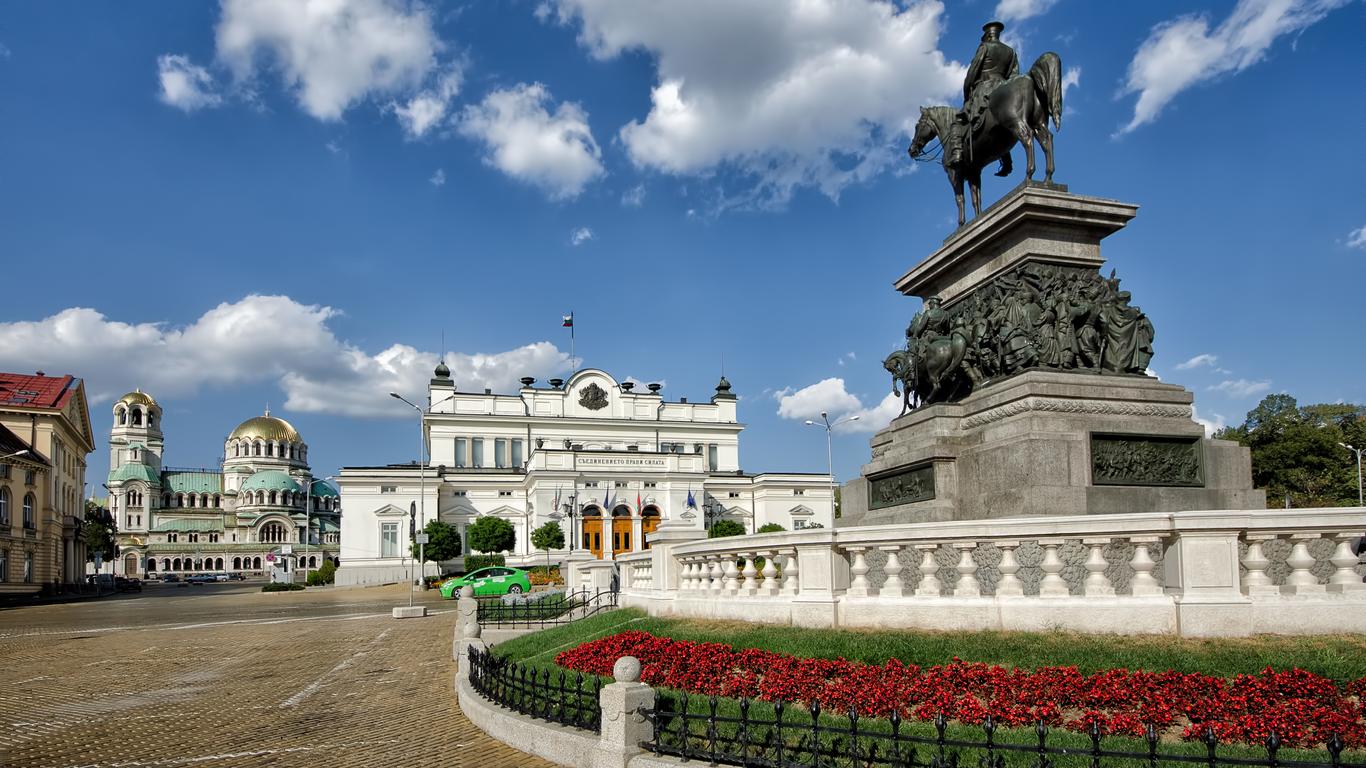
Sofia travel guide
Sofia Tourism | Sofia Guide
You're Going to Love Sofia
Bulgaria's elegant and relaxed capital constantly throws up surprises. Whether it's stumbling upon the ruins of a Roman theater in the lobby of a luxury hotel, dining on superb Lebanese cuisine, or sifting through antiques at a flea market, Sofia has delights and distractions aplenty.
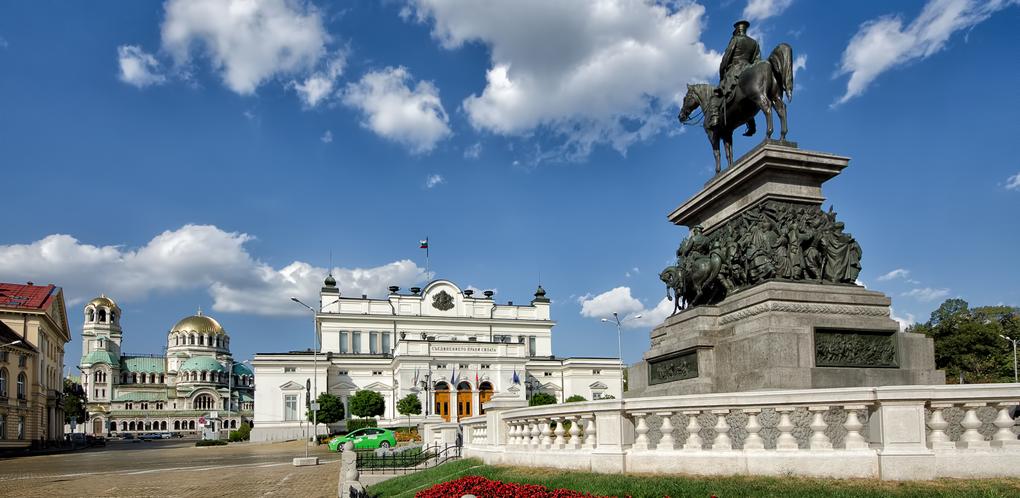
It also has plenty of history on offer. From its pre-Roman origins through periods as an Imperial outpost, a medieval Byzantine metropolis, an Ottoman center, and a key capital behind the Iron Curtain, Sofia has been many things, and has a wealth of historical attractions from every era.
Add in a ski resort within a half an hour of the city center, tens of heated open air swimming pools across the city, and a packed schedule of arts and music events, and you have a truly exceptional Eastern European destination.
Top 5 Reasons to Visit Sofia
1. The Gorgeous Array of Churches
Sofia's historical jewels are obvious. When you wander around town, you'll be astonished by architectural masterworks like Alexander Nevsky Cathedral, the UNESCO-listed Boyana Church, and the Church of Sveti Sedmochislenitsi. Many used to serve as mosques, and Byzantine remains are everywhere.
2. Superb Museums on a Dizzying Variety of Topics
Museum fans never leave Sofia disappointed. The National Archaeological Institute is a great place to start, with artifacts dating back to the 4th century BC, and the Sofia History Museum makes a great chaser. After that, the Museum of Socialist Art is a must-see, while Muzeiko offers child-friendly science-themed exhibits.
3. World-Class Music, Art, and Dance Events
Sofia is one of the cultural hubs of the entire Balkan region. From the graceful performances during Sofia Dance Week and the full-on musical assault of Sofia Rocks, to the refined, intellectual pleasures of One Architecture Week, the city hosts events of all kinds.
4. There's a Modern Ski Resort within the Metropolitan Area
How many major world cities can boast a ski resort inside the city limits? Not many, but Sofia can. The city is overlooked by the bulk of Mount Vitosha, which, perhaps not unsurprisingly given its convenient location, is Bulgaria's most popular ski resort.
5. A Chance to Peek Behind the Iron Curtain
For many visitors, Sofia remains a name from an era of closed borders and international tension. These days, you can learn all about the city's Communist past at the Museum of Socialist Art, take walking tours of the city as it was in the 1950s, and hunt for Communist-era souvenirs at flea markets like Bitaka.
What to do in Sofia
1. The St. Alexander Nevsky Cathedral: Gold-topped Glory
One of the world's largest Eastern Orthodox cathedrals, this 20th-century church was built in commemoration of the 200,000 soldiers who died in the Russo-Turkish War. The Neo-Byzantine style is made up of soaring domes, a vast and ornate interior, and remarkable mosaics which spread across the walls. Get lost in the incredible detail of the artwork found on nearly every surface. Nearby, tourists will also find Sofia University and the National Art Gallery.
2. Vitosha Mountain: Escape the Concrete
Looming over the city and seen from throughout the capitol, Vitosha Mountain is the best day trip out of Sofia. Nearby but worlds away from the hustle and bustle of the urban streets, Vitosha has a variety of scenic hiking trails for visitors of all ages and skills levels. Make your way through a diversity of flora and fauna and take in the serenity of nature. In the winter things get cranked up a notch, with great alpine skiing and snowboarding opportunities.
3. National Historical Museum: Chronicles of Bulgaria
Hundreds of thousands of artifacts from throughout the history of Bulgaria are found here, in Sofia's largest museum. Prehistoric findings, archaeological discoveries, Medieval tales and more all make the museum the treasure trove that it is today. All the questions you've ever had about the nation are sure to be answered in the halls of this dedicated research center.
4. Boyana Church: To Medieval Times
This centuries-old church is one of the most well-preserved landmarks in Sofia, and it has developed alongside the city since the Middle Ages. Originally constructed around one thousand years ago, different elements of the building have been added with every subsequent century. Frescoes have been overlaid, wings have been extended, and other sections re-conceptualized. So today, the orthodox church remains a living reminder of the history of the city.
5. National Palace of Culture: Emblem of the City
Established for the support and celebration of Bulgarian culture, this enormous building stands out starkly in the midst of green parklands. You can't miss it - the futuristic, black-and-white design fills a vast footprint at the end of a long reflecting pool. Its facilities were established for the 1300th anniversary of the nation, and today it is one of the most popular venues in the region. At the very least, make sure to check out the building's exterior as you wander around the nearby parks and memorials.
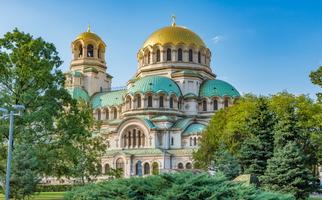
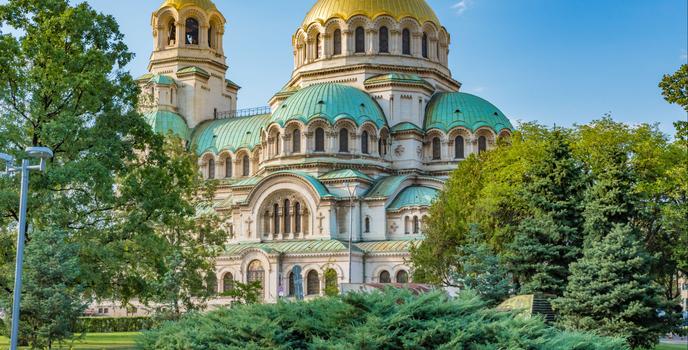
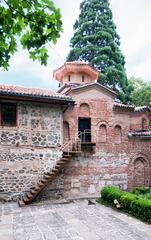
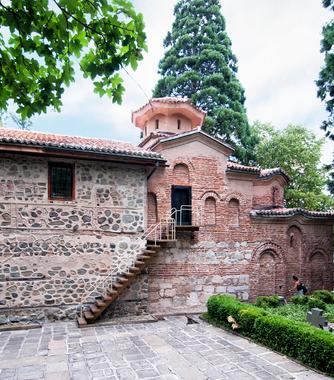
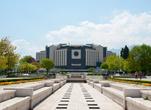
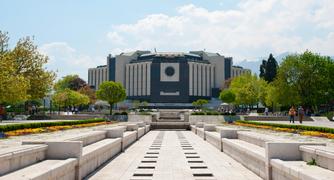

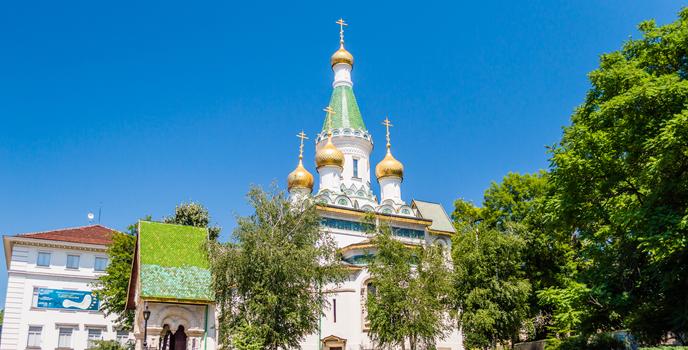
1. The St. Alexander Nevsky Cathedral: Gold-topped Glory
One of the world's largest Eastern Orthodox cathedrals, this 20th-century church was built in commemoration of the 200,000 soldiers who died in the Russo-Turkish War. The Neo-Byzantine style is made up of soaring domes, a vast and ornate interior, and remarkable mosaics which spread across the walls. Get lost in the incredible detail of the artwork found on nearly every surface. Nearby, tourists will also find Sofia University and the National Art Gallery.
2. Vitosha Mountain: Escape the Concrete
Looming over the city and seen from throughout the capitol, Vitosha Mountain is the best day trip out of Sofia. Nearby but worlds away from the hustle and bustle of the urban streets, Vitosha has a variety of scenic hiking trails for visitors of all ages and skills levels. Make your way through a diversity of flora and fauna and take in the serenity of nature. In the winter things get cranked up a notch, with great alpine skiing and snowboarding opportunities.
3. National Historical Museum: Chronicles of Bulgaria
Hundreds of thousands of artifacts from throughout the history of Bulgaria are found here, in Sofia's largest museum. Prehistoric findings, archaeological discoveries, Medieval tales and more all make the museum the treasure trove that it is today. All the questions you've ever had about the nation are sure to be answered in the halls of this dedicated research center.
4. Boyana Church: To Medieval Times
This centuries-old church is one of the most well-preserved landmarks in Sofia, and it has developed alongside the city since the Middle Ages. Originally constructed around one thousand years ago, different elements of the building have been added with every subsequent century. Frescoes have been overlaid, wings have been extended, and other sections re-conceptualized. So today, the orthodox church remains a living reminder of the history of the city.
5. National Palace of Culture: Emblem of the City
Established for the support and celebration of Bulgarian culture, this enormous building stands out starkly in the midst of green parklands. You can't miss it - the futuristic, black-and-white design fills a vast footprint at the end of a long reflecting pool. Its facilities were established for the 1300th anniversary of the nation, and today it is one of the most popular venues in the region. At the very least, make sure to check out the building's exterior as you wander around the nearby parks and memorials.








Where to Eat in Sofia
Bulgarian food is a delightful fusion of Turkish kebabs and Eastern European potato-based dishes, with no end of mouth-watering meat-based dishes. Some of the best places to try authentic Bulgarian cuisine are Mehana Karajata (where you may be serenaded by folk troupes) and Hadjidraganov's Houses. However, international dishes are well represented too, with excellent pizza options like Godzilla and pasta joints like the Spaghetti Kitchen. Expect a high-end meal to cost no more than лв15 per head.
When to visit Sofia
Locals will tell you that the best time to go is definitely between May and September (the Bulgarian summer, more or less). Try May or early June for fine weather and smaller crowds. High summer is still fine, and you can cool off in the city's open air pools, while winter makes skiing in Vitosha another possibility.
How to Get to Sofia
Plane
Sofia Airport (SOF) is around six miles east of the city center, but it doesn't have any direct connections to North America, so you'll probably need to transfer via France, the UK, or Germany. When you touch down, the best route into town is the subway from Terminal 2 (лв1.60 for a single). Buses cost the same amount, so aren't usually the preferred option. If you choose to take a taxi, expect to pay around лв15 for the journey.
Train
Sofia is a major international train destination, with direct connections to cities like Berlin, Istanbul, and Moscow. The main station is around a mile north of the city center but is on the subway network, so getting to downtown hotels won't be an issue.
Car
If you are driving to Sofia from Istanbul, take the Turkish E80 highway, which then becomes Bulgaria's A4, then switch onto the A1 at Parvomay. The A1 also runs to the capital from Black Sea resorts. If you are coming from Belgrade, take Serbia's E-75, then change to the E-80 at Nis, which runs across the border straight to Sofia.
Bus
Sofia has excellent intercity and international bus connections thanks to companies like Eurolines and MATPU, and you can purchase cheap bus tickets from European cities like Belgrade, Berlin, or Paris. All international services get into the Central Bus Station, right next to the train station.
Airlines serving Sofia
Where to stay in Sofia
Center - Sofia's city center is compact and stuffed with sights and attractions. Within Vasil Levski Boulevard, you'll discover enchanting churches, the Grand Cathedral, the National Art Gallery, and more offbeat places like the Central Mineral Baths - the ideal spot for a cut-price therapeutic spa session.
Popular Neighborhoods in Sofia
Lozenets - just south of the city center, Lozenets is one of the city's greenest, most relaxed areas. That might be something to do with the thousands of students in the neighborhood, or the expanse of Boris Garden. Well served by subway stops, it's a handy, safe base to explore the rest of the town.
Izgrev - on the other side of the Boris Garden you'll find Izgrev (or "Sunrise" in Bulgarian). Bulgaria's media hub and long a popular area with artists, modern Izgrev is one of the most upmarket neighborhoods in the city.
Where to stay in popular areas of Sofia
Most booked hotels in Sofia
How to Get Around Sofia
Public Transportation
The crown jewel of Sofia's public transportation network is the city's subway system, but there are also buses, and trams buzzing around every neighborhood. However you travel, there's a fixed single fare of just лв1.60, and you can purchase 10 journeys for лв12.
Taxi
Taxis in Sofia are cheap and easy to spot with their yellow signs. The meter drop will be between лв0.60 and лв0.90, with a charge of around лв1.40 per mile after that, and most inner-city journeys will come to about лв10.
Car
Renting a car is a great way for tourists to venture into the mountains (and very handy if you are hiring ski equipment). Rental companies in the city center include Hertz, Naycar, and AutoJet, with plenty more at the airport. Rates shouldn't be high, at around лв18 per day.
The Cost of Living in Sofia
Shopping Streets
Sofia has its share of luxury shopping malls, but the place to head for high-end window shopping is the Vitosha Boulevard, where you'll discover fashion stores like Max Mara or Takeshy Kurosawa, jewelry brands like Swarovski, and no shortage of cafes. A grittier shopping experience can be enjoyed at flea markets like Zhenski Pazar, which may be the largest open air market in Europe.
Groceries and Other
If you need to shop for groceries and other essentials, the best places to head in Sofia are supermarkets like Gala, Billa, or the Carrefour on boulevard Tsarigradsko Shosse. The cost of living is very cheap, with a gallon of milk costing about лв7.50.
